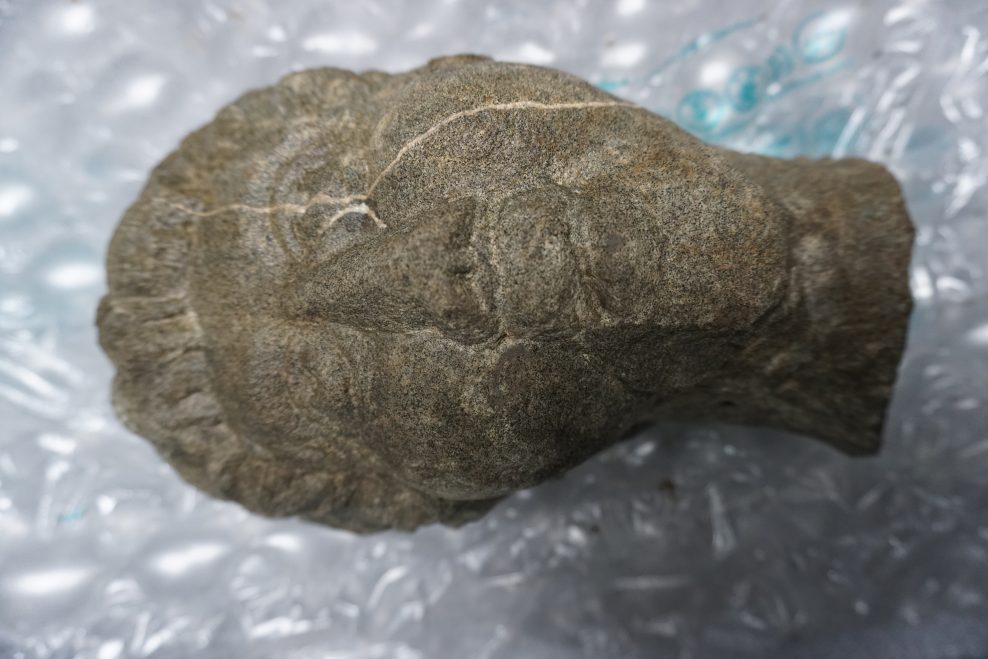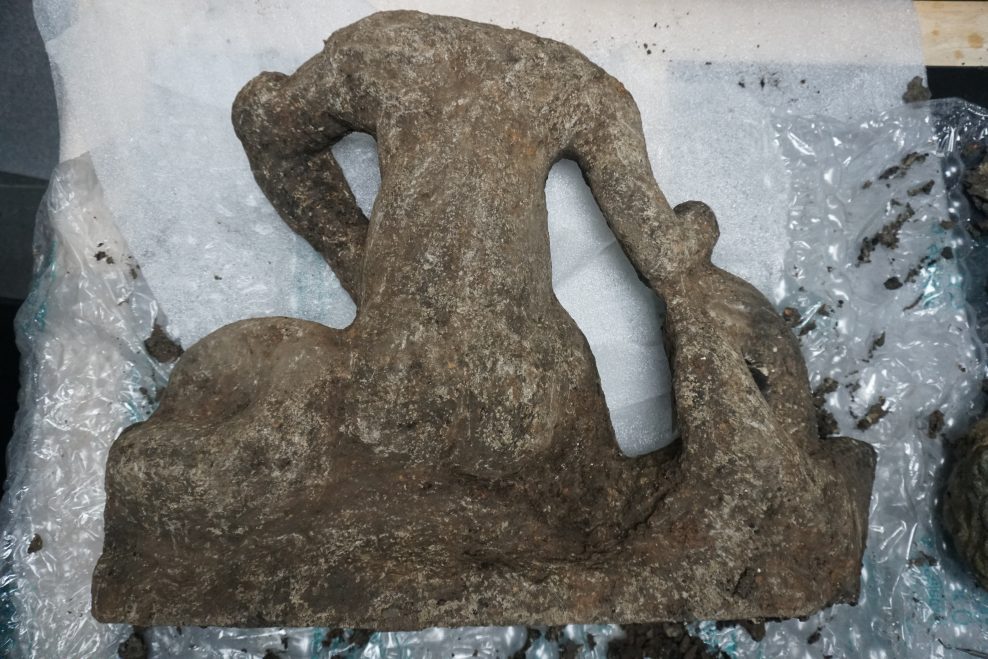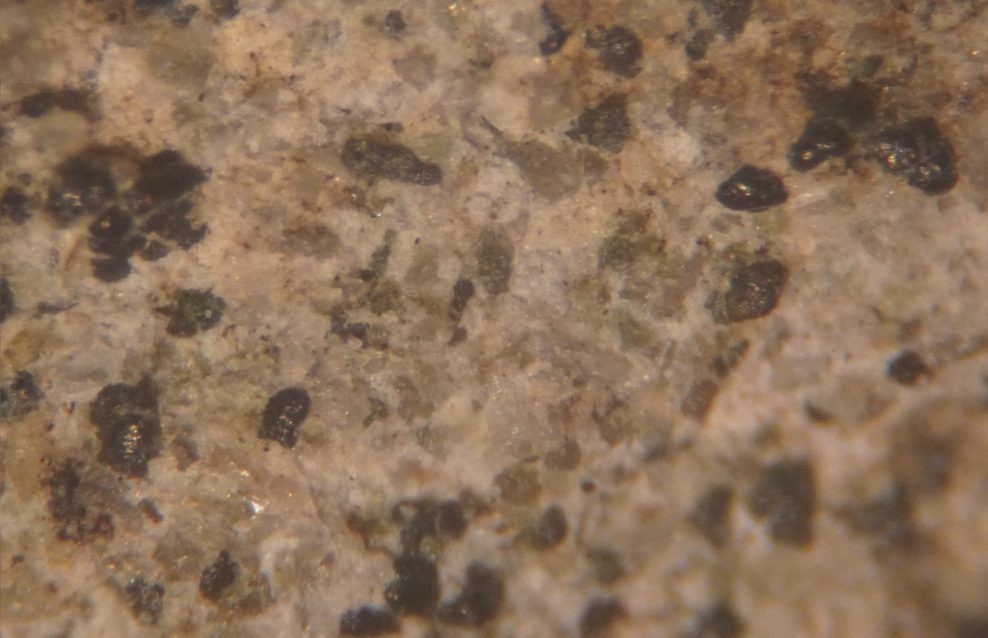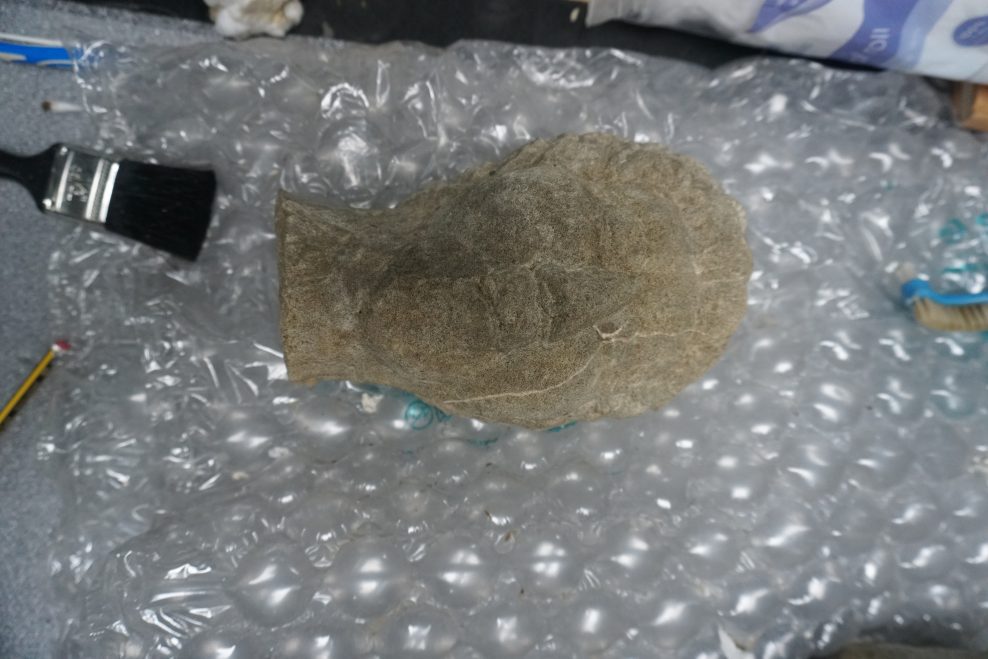Projects
Conservation of Roman Sculpture For The Canterbury Archaeological Trust Limited
PROJECT – Stabilisation, cleaning and conservation assessment of Roman stone sculpture comprising 1no. main body and 1no. head (SF123, C1304; Project Code: EX FLT 23)
Size – Head 135mm x 210mm x 150mm
Body 700mm x 200mm x 540mm
Initial observations – The sculpture was fully encased in damp burnt pyre remains. This was beginning to crack as it dried.
Treatment– The sculpture was carefully cleaned with deionised water and soft brushes, some of the harder burnt pyre remains were removed using dental tools keeping clear of the substrate. When some of the pyre remains where removed and examined they had a slight dusting of stone, a fragment was also found in the spoils (RS01). Once all remains were removed the sculpture was poulticed in acid free tissue paper and allowed to dry. When checked there was no sign of efflorescence on the substrate. The sculpture was observed over 4 days, with no salts visible. We did find three areas that required consolidation. These were treated with a 3% solution of Paraloid B72 in acetone (W/V). The lower RHS had slight cracking, possibly caused by the heat of the embers, plus 2 of the fingers were friable and required consolidation.
Findings – We found no sign of poly-chrome. The front of the sculpture has banding of an orange colour which we feel may be the results of the stone being burnt on the still hot embers. This is not as apparent on the back. We feel the breaking of the head from the body had been carried out about the same time that the sculpture was buried. The break on the head had fractures which tapered to a fragile feather edge. This tapering would be broken off with ease with frequent handling.
The fragment was used for microscopic identification of the stone.
The shape of the granuals and the colour and texture of the sample would indicate that the sculpture is made from Kentish Rag or possibly Hassock stone.








